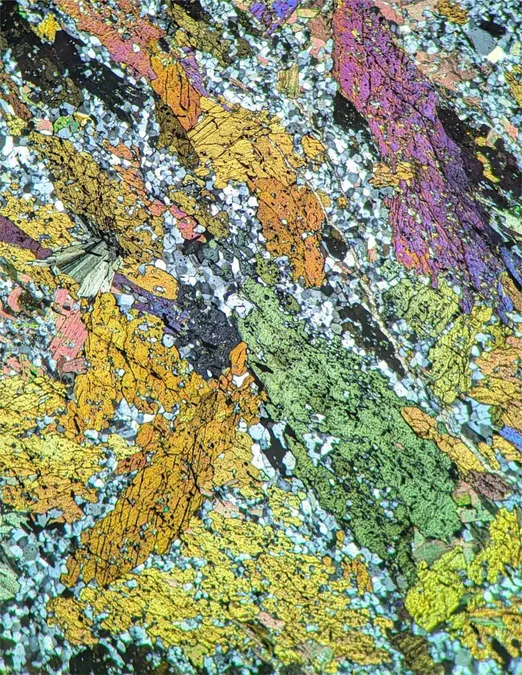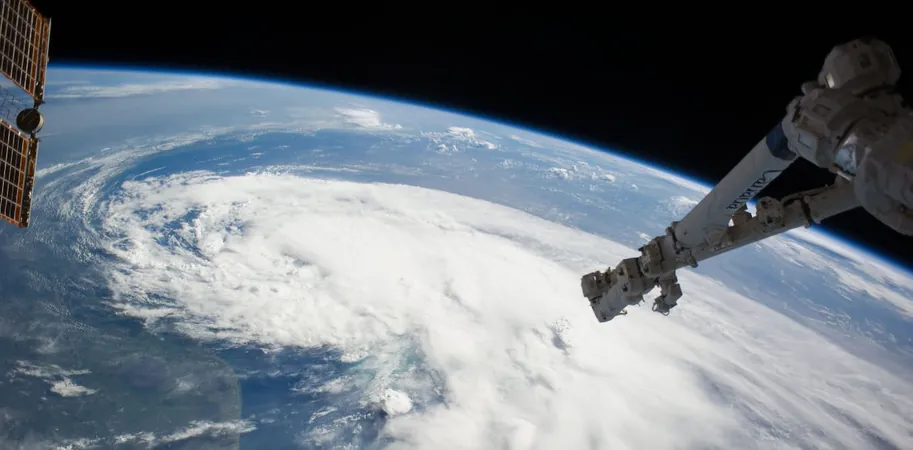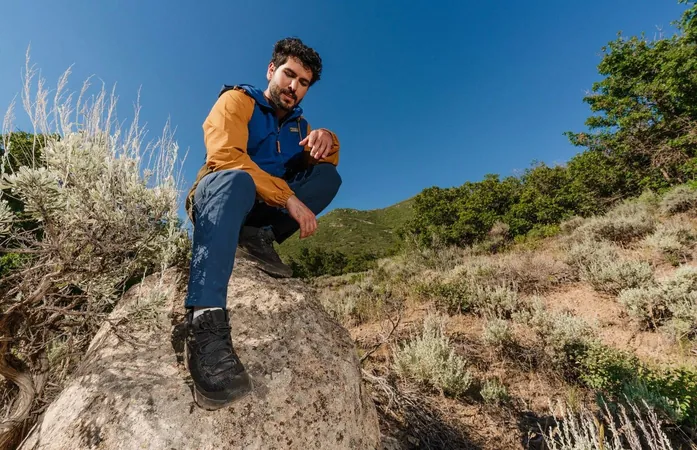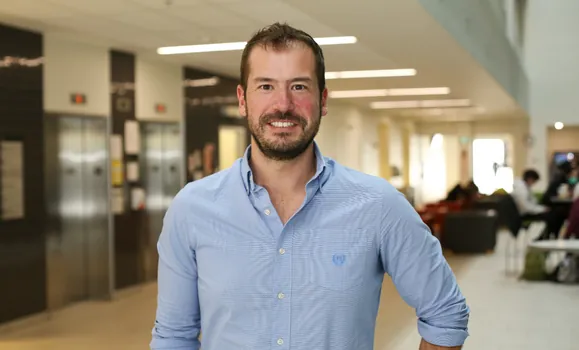
Uncovering Earth's Ancient Secrets: New Research Reveals Metamorphic Rocks as Key Players in the Carbon Cycle
2024-11-04
Author: Jacob
Introduction
In the grand timeline of our planet, humans emerge as mere spectators in the fleeting final moments of a 365-day year, with Earth's history stretching back a formidable 4.6 billion years. The Proterozoic Eon, spanning from 2.5 billion to 543 million years ago, showcases a world where the sun was still a fledgling star, casting a dimmer light on Earth that heavily relied on an intense greenhouse effect to sustain life.
Groundbreaking Research
Groundbreaking research led by Emily Stewart, an Assistant Professor of Geology at Florida State University, has sparked a paradigm shift in our understanding of how warmth was generated to foster early life. Contrary to long-standing beliefs that volcanic activity was the primary source of warmth, Stewart has unveiled intriguing evidence suggesting that carbon dioxide released from metamorphic rocks played a pivotal role in this ancient warming.
Study Overview
In her co-authored study titled "Enhanced Metamorphic CO2 Release on the Proterozoic Earth," published in the Proceedings of the National Academy of Sciences, Stewart, alongside Donald Penman from Utah State University, presents a compelling case for the significance of metamorphic processes in regulating Earth’s climate during this enigmatic era.
Comments from Emily Stewart
"By delving into the ways ancient geological processes influenced temperatures in Earth’s past, we gain vital insights into climate behavior. This understanding is crucial as we face a world driven by human-induced climate change," Stewart remarked. Furthermore, insights into natural carbon transfer in rocks hold promise for addressing contemporary challenges in carbon management.
The Role of Carbon Dioxide
Metaphorically speaking, carbon dioxide serves as a thermal blanket that envelops our planet. The Proterozoic Eon saw the dawn of some of life’s earliest inhabitants, including primitive jellyfish-like creatures and worms, all thriving beneath a gradually warming atmosphere, enriched by elevated carbon levels over millions of years.
Traditionally Accepted Theories
Traditionally, scientists have attributed atmospheric carbon primarily to volcanic activity dating back roughly 3.8 billion years. However, using advanced simulations and mathematical models, the research team highlighted the crucial contribution of metamorphic rocks. The heat and pressure experienced by these carbonate-silicate rocks during geological transformations lead to the release of carbon dioxide, functioning as a warming agent for Earth.
Findings of the Research
Stewart and Penman's findings indicate that the release of carbon dioxide from metamorphic processes during the Proterozoic would have created atmospheric conditions that were four times more carbon-rich than pre-Industrial estimates for Earth. "When we refer to 'modern' geology, it often encompasses the last 500 million years post-Cambrian explosion," Stewart explained. "However, the sheer scale of human-induced carbon emissions makes historical comparisons seem almost trivial."
The Carbon Cycle
The story of carbon extends far beyond the atmosphere: it is part of a vast cycle encompassing oceans, flora, fauna, rocks, and decaying organisms. While oceans absorb significant amounts of carbon and plants utilize sunlight to sequester it in their tissues, animals return carbon dioxide to the atmosphere.
Revising Understanding of Rocks
While rocks seem rigid and unchanged, Stewart and Penman’s findings reveal they have historically contributed more significantly to carbon cycling than previously acknowledged. Today, they act as both sources and sinks of carbon. "Previously, metamorphic decarbonation was seen as a passive process in carbon recycling. Our research indicates that the rate of carbon dioxide release can vary over time and is interlinked with other carbon cycle components, potentially altering atmospheric carbon concentrations in previously unconsidered ways," Penman added.
Future Research
To further probe the role of metamorphic rocks in ancient warming, Stewart and her doctoral students, Kanwa Sengupta and Sayantan Saha, plan field research in Ontario's Central Metasedimentary Belt.
Conclusion
"What captivated me about geology is its ability to serve as a gateway to Earth's past," Stewart enthused. "While archaeology offers glimpses into the last 300,000 years, geology provides access to a staggering 4.6 billion years of Earth's history through the rock record." This research not only reshapes our understanding of Earth's climate systems but also calls attention to the vital role of geological processes, underscoring the interconnectedness of the planet's physical and biological histories and their relevance to current climate change dilemmas.









 Brasil (PT)
Brasil (PT)
 Canada (EN)
Canada (EN)
 Chile (ES)
Chile (ES)
 España (ES)
España (ES)
 France (FR)
France (FR)
 Hong Kong (EN)
Hong Kong (EN)
 Italia (IT)
Italia (IT)
 日本 (JA)
日本 (JA)
 Magyarország (HU)
Magyarország (HU)
 Norge (NO)
Norge (NO)
 Polska (PL)
Polska (PL)
 Schweiz (DE)
Schweiz (DE)
 Singapore (EN)
Singapore (EN)
 Sverige (SV)
Sverige (SV)
 Suomi (FI)
Suomi (FI)
 Türkiye (TR)
Türkiye (TR)